A dovecote or dovecot, as it is sometimes spelt, is simply a structure built to house domesticated pigeons.
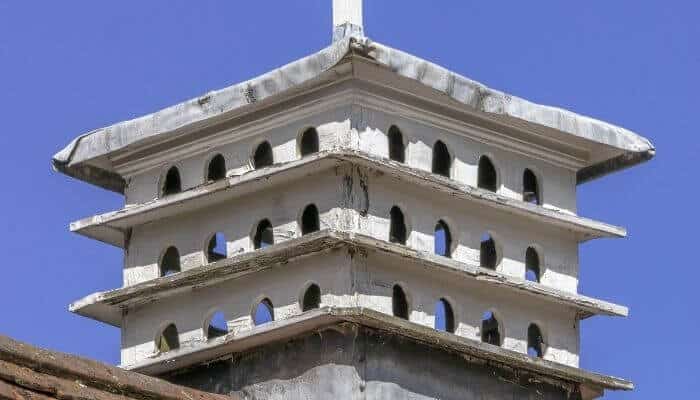
They are built as safe havens and a home base for the birds. Today they might merely be called lofts, but their purpose hasn’t changed for time out of mind.
Why not call them pigeoncotes? It may be because pigeons are descended from wild rock doves and even though their name has changed over time, the name ‘dovecote’ certainly sounds better.
In English-speaking countries, they were also known as Culverhouses. In Wales, they were called ‘Colomendy’ and in Scotland ‘Doocot’.
Dovecotes can also be used for housing other small birds.
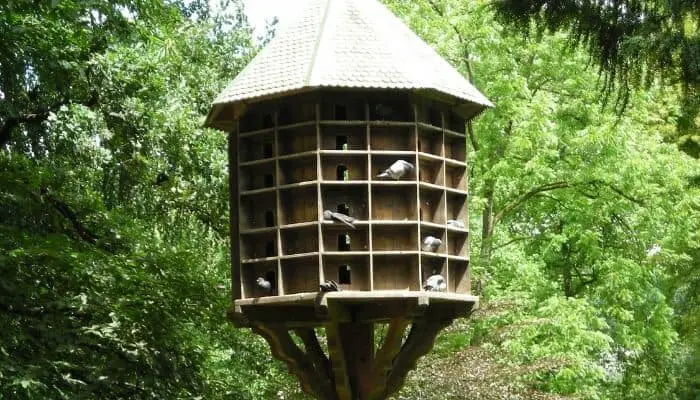
The dovecote has had a long history, ever since man first decided to domesticate these birds for both their beauty and their meat.
Although built for a functional purpose, many dovecotes are aesthetically pleasing.
Mankind always has the urge to improve designs and beautify whatever structures he builds and that also applies to the accommodation of their pets and other domesticated animals.
Domestication of the Pigeon
It is widely accepted that pigeons were domesticated around 6,000 years ago thanks to evidence in Mesopotamian cuneiform tablets and Egyptian hieroglyphs.
There are some theories that believe it happened even longer ago, 10,000 years ago.
Raising pigeons for meat and beauty first took place in Mesopotamia (now part of Iraq) between the Euphrates and Tigress rivers where permanent settlement and civilization was established.
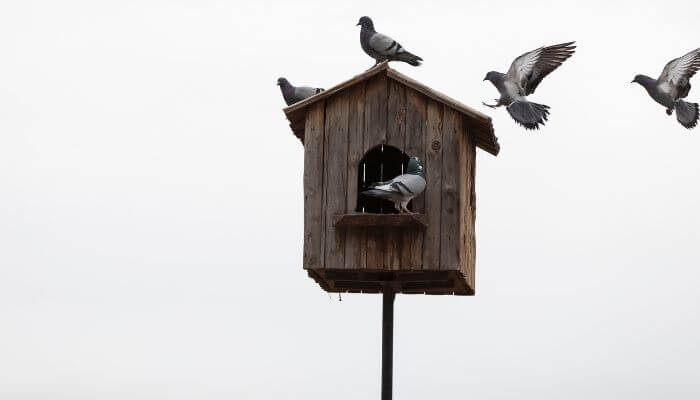
Apart from the meat, they yielded eggs and feathers for bedding. Their droppings or guano was also used as fertilizer. From there, the custom of pigeon domestication expanded in all directions and into every society.
To domesticate the birds, homes were needed and the most historic pigeon “houses” are what is known today as pigeon towers.
There are many existing examples of ancient pigeon towers, some dating back centuries in the Middle East.
These towers can be said to be the forerunner of dovecotes.
Dovecotes in Great Britain
Britain has long been a pigeon-loving nation and it provides a great narrative for the history of dovecotes.
The oldest known surviving dovecote, called the Knights Templar dovecote, is in Garway, Herefordshire, which was built in 1326.
It is believed that the custom of raising pigeons and the dovecotes to house them, was introduced to Britain by the Romans.
They called them ‘Columbarium’ and took the idea from the Middle East, where they had been raising pigeons for centuries. It was a cheap and easy way to raise meat for poor and slave populations.
In Britain, right up until the 1600s, the raising of pigeons for meat was a privilege granted only by the Crown and only to the nobility. Anybody else was prosecuted.
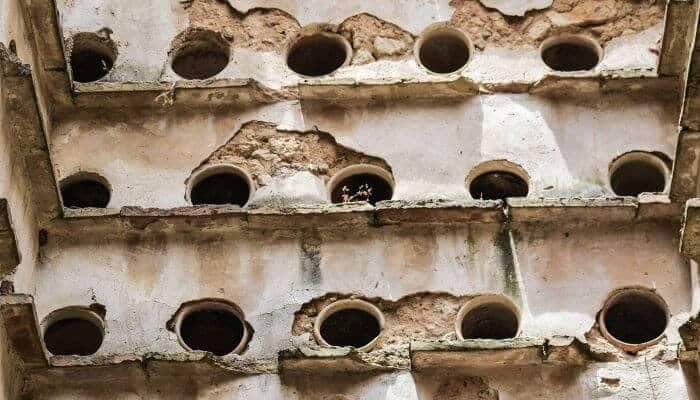
The ‘right’ to raise pigeons was probably introduced after the Norman Conquest.
Over time, this exclusivity resulted in pleasing construction and designs instead of just functional structures.
As the nobility was eager to show off their power and importance by building imposing structures, this came to include the humble dovecote too.
The symbolism of doves is an important factor too.
Doves have always had a divine Christian significance. Given their access to architects, cheap labour, and materials, monasteries and churches could afford to have better dovecotes built.
Dovecotes of religious institutions became another point of pride and a symbol of privilege. Dovecotes have been a part of British architecture for hundreds of years.
Castles, manor houses, stately homes, and monasteries, who were also granted the privilege, all had their dovecotes at one time.
Most of the earliest dovecotes were wooden. They were rectangular, square, octagonal, or polygonal, made up of angled sides.
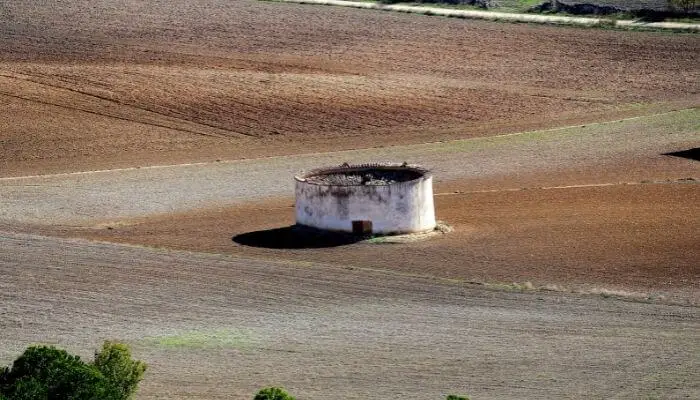
By the 16th century, the shape had changed to rounded and the materials to brick or stone.
Like those of the Middle East, many were very big structures housing hundreds of birds and with an entrance big enough for a person to walk in. Around the inside walls were niches for the pigeons to nest in.
Conical roofs were very much in fashion, but in the west of England and Wales domed stone roofs were used. Entrance and exit holes for the birds were small and high up to deter predators.
Sloping roofs made of slate or tiles were also used. Many had a cupola or turret on the top. Some of these also had louvered dormers too.
Although is possible to find nesting niches built into some old buildings, most were free-standing structures.
Many had a device called a potence to help collect eggs from the high nesting boxes.
This was a revolving wooden pillar set in the centre that had arms and a ladder attached that could be moved around the structure.
After the 16th century, the laws on raising pigeons were relaxed and it was open to all. This was the start of the decline in British dovecotes.
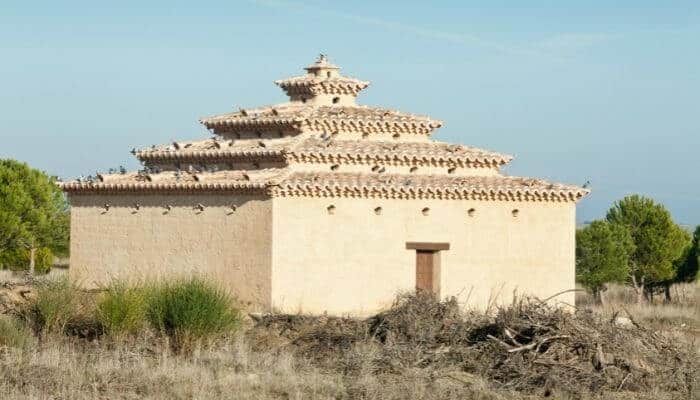
Because pigeon production wasn’t a privilege anymore and open to the common people, the nobility lost interest.
Poorer people didn’t have the wealth to build extravagant structures to house their birds.
By the 1800s, commercial production of pigeon meat had waned in favour of other types of fowl and meat.
Many old dovecotes were emptied and repurposed, some were left to decay or were torn down.
Examples of Surviving Dovecotes in England
- Kinwarton Dovecote – A 14th-century circular dovecote in Warwickshire with yard thick walls, 580 nesting niches, and the original potence.
- Hawford Dovecote – A half-timbered 16th-century dovecote, once part of a monastic grange in Worcestershire.
- Willington Dovecote – This 16th century stone dovecote in Bedfordshire has nesting niches for 1,500 birds.
Other notable dovecotes can be found at inside Bodiam Castle and at Eardisland, Great Comberton, Little Comberton, Hill Croome, Dorrnston, and Barton Court.
Dovecotes in Scotland
In Scotland, many dovecotes were built in a conical beehive shape with a domed top and an entrance hole at the crown.
This style can also be seen in the north of England.
Midway through the 16th century, the style changed to rectangular structures with a roof sloping in one direction called the ‘Lectern style’.
An example of the lectern style can be found at Finavon Castle in Angus, which dates back to the 17th century.
It is also the largest doocot in Scotland and probably in the whole of the British Isles with 2,400 nesting niches.
A prime example of the beehive style can be seen at Phantassie, East Lothian.
Modern urban wooden or corrugated iron dovecotes can be seen in both Edinburgh and Glasgow allotments. Scotland has had a variety of styles, from beehive, conical, castle, tower, and lectern.
Other interesting surviving Scottish dovecotes include Sheriffhall, Lady Kitty’s Doocot at Haddington, Bogwood, and Auchmacoy.
Dovecotes in Wales
Hygga House in Monmouthshire has a 16th century round dovecote that had fallen into disrepair but was restored in the 1980s.
Built of stone it has windows and six tiers of nesting niches.
Cadoxton Court in Glamorgan has a dovecote that was originally built in the 13th century.
A rounded shape, it stands 8 metres high, has a metre-thick wall, and can house 700 birds.
Modern Dovecotes in Great Britain
Today bird fanciers can buy ready-made, have dovecotes designed to order, or build a dovecote.
Dovecotes have gone in and out of style. It is said that during the 1920s there was a resurgence of interest in having dovecotes in the garden and many people like the idea even today.
Of course, these aren’t the grand structures of yesteryear, due to limits on space. Modern dovecotes are made of wood but stick with the old traditional styles.
They are usually ornate and decorative even if much smaller than of old.
Dovecotes Around the World
Ireland
The country still has many dovecotes. Like in Britain, the style dates mostly from the Norman period when only the nobility and religious orders were able to raise them.
Ballybeg Abbey, a 13th-century Augustinian priory In County Cork is a prime example of a stone Irish dovecote. A later example, dating to the mid-1700s is at Treantagh House in Donegal.
Continuing the relationship between the church and pigeons, dovecotes are at Bridgetown Abbey in County Cork and three Cistercian abbeys at St Mary’s, Kilcooley, and Mellifont.
Demonstrating the “big house” with their own dovecotes are Woodstock Estate, Oughterard, Cahir and Adare.
France
Many French dovecotes are in Normandy and Brittany. They are called variously, pigeonnier, fuie, or colombier.
The French have previously used wicker baskets or pottery jars laid flat as nests in their nesting niches.
Many dovecotes were built into manor houses, but some are free-standing.
The largest of these can be seen at Chateau d‘Aulnay and Chateau de Panloy.
Further south, a good place to view a number of different styles of French dovecote is in the landscape of the Tarn et Garonne department.
Egypt
This country has become famous for its pigeon towers.
These mostly stick to the old traditional design that has been handed down from generation to generation over hundreds of years.
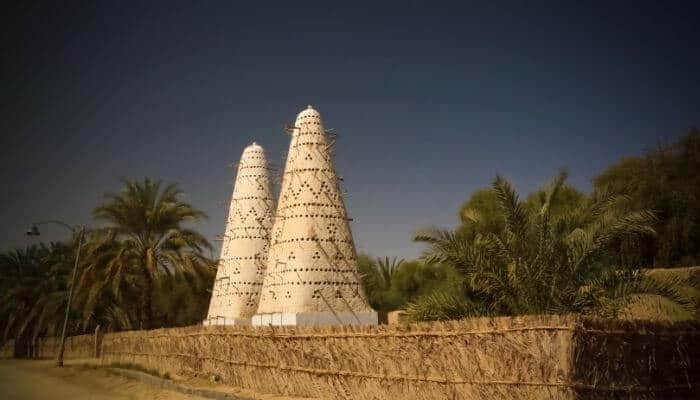
The majority are made of adobe brick and are an inverted cone shape.
As a modern feature, they are part of the skyline in many Egyptian towns.
Because of limited space, most are built on the flat roofs of the houses.
Iran
The city and surroundings of Isfahan is equally as famous for its dovecotes as Egypt.
Over 300 historic dovecotes have been counted.
The largest ones can house up to 14,000 birds.
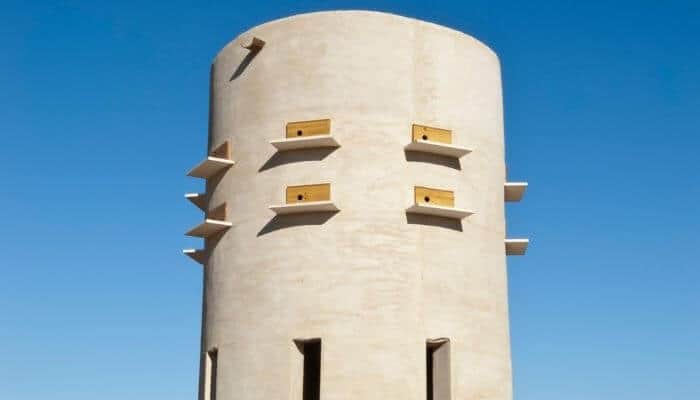
Pigeon guano to use as fertilizer, in tanning, and later in gunpowder seem to be the main motivation for such large pigeon populations.
Turkey
The region of Cappadocia is famous for its houses that have been carved from its soft tufa rock. It’s the same for their dovecotes too.
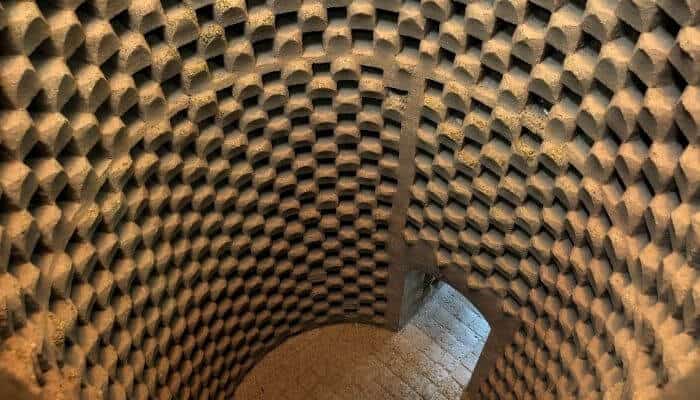
They are mostly built facing south to shield the birds from cold north winds and ensure that they get enough southern sunlight.
Although some are ancient, most Cappadocian dovecotes are more modern and date from the 18th century onwards.
Belgium
No nation has ever embraced pigeons more for racing than Belgium so it is logical that dovecotes in this country are designed for the purpose of homing racing pigeons.
Most have trap doors that allow pigeons in but not out. Designs are similar in The Netherlands.
North America
In the USA dovecotes were more typically called culver houses. They were either rectangular or circular free-standing structures or built into the end or top of a house or barn.
A good example of a stone dovecote can be seen at Shirley Plantation in Virginia and a wooden free-standing dovecote in Williamsburg.
In Portsmouth, New Hampshire, there is a magnificent example of a dovecote incorporated into a barn.

Thomas Jefferson, the third President of the United States, drew up plans for a dovecote on his estate at Monticello.
It was never built where intended but the plan came to fruition in 2014 (236 years after Jefferson committed the design to paper) at Rose Hill.
In Canada, the most famous dovecote is the Pigeonnier in Old Quebec, which also gives its name to the square in which it stands.
Global Interest
We’ve picked out only a few countries where dovecotes can be found.
While not as numerous elsewhere you will find examples of wooden dovecotes in Madagascar, a wonderfully ornate tower in Estonia, a backyard dovecote in Israel, and a large whitewashed stone dovecote on the Greek island of Tinos.
Related Article:
In Conclusion
Where they are people and pigeons you are sure to find some dovecotes, but many will be of the modern loft style and not the elegant and imaginative styles of the past.
The use of large dovecotes has waned in the western world because of the decline in rearing pigeons for meat.
Most modern pigeon fanciers tend to prefer the loft-style home for their birds, leaving the ornamental dovecotes for casual bird lovers who erect them in their gardens.
